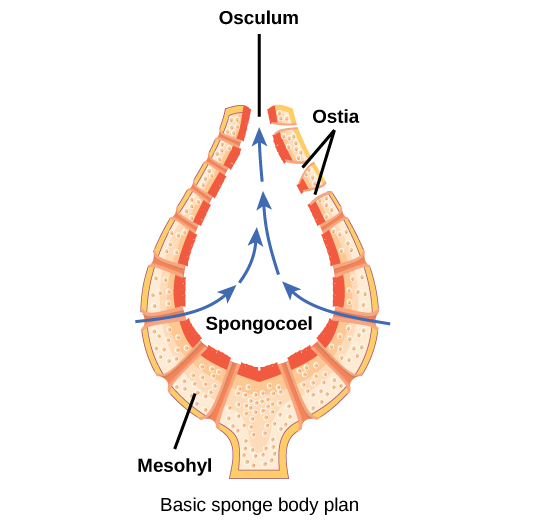
In addition to the osculum, sponges have multiple pores called ostia on their bodies that allow water to enter the sponge. The gel-like consistency of mesohyl acts as an endoskeleton, maintaining the tubular morphology of sponges.

Mesohyl is an extracellular matrix consisting of a collagen -like gel with suspended cells that perform various functions. Pinacocytes, which are epithelial-like cells, form the outermost layer of sponges, enclosing a jelly-like substance called mesohyl. While sponges (excluding the Hexactinellids) do not exhibit tissue-layer organization, they do have different cell types that perform distinct functions. The specialized cell types in sponges (b) each perform a distinct function.

\( \newcommand\): Sponge morphology: The sponge’s (a) basic body plan is a cylinder shape with a large central cavity.


 0 kommentar(er)
0 kommentar(er)
